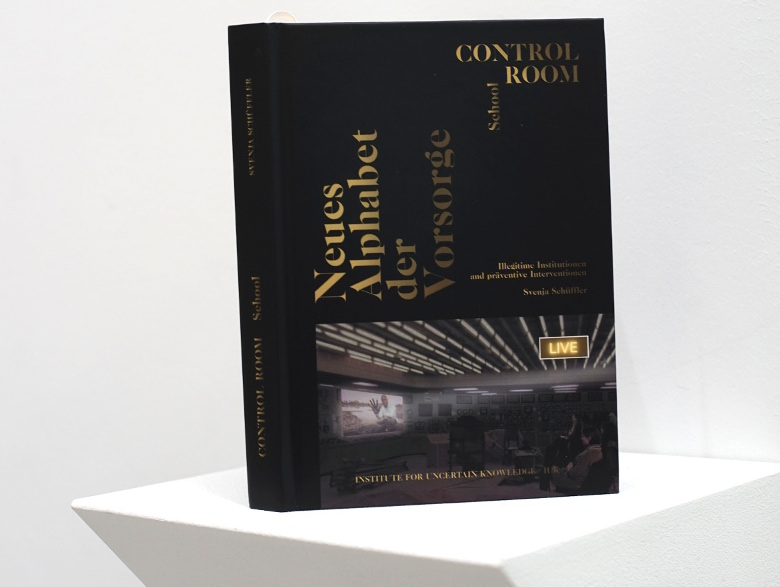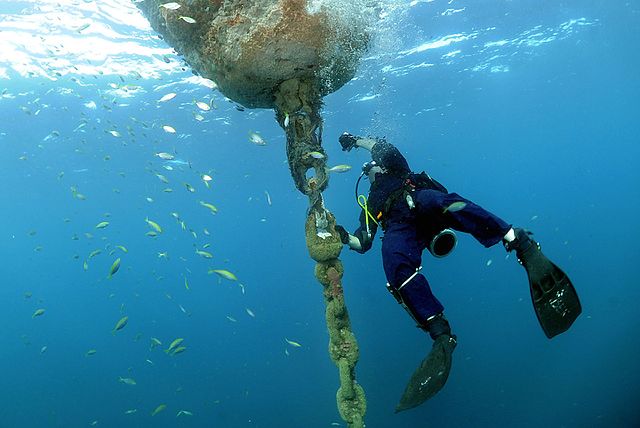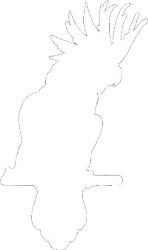
MAY 2019
Control Room / How to manage the Apocalypse?
Both aesthetically and literarily, the project poses the question: “How to manage?“, and explores whether management in a high-tech civilization significantly fueled by fossil carbon follows this glorifying logic: Safeguarding energy supplies and technology projects takes absolute precedence over the accompanying side effects. Wouldn‘t that mean, that undesired consequences don‘t require prevention but just control, so to speak management?
There seems to be no just basis for a belief that sees disasters and undesired consequences as things that can be managed, because the limits of insurability, that is the increasing lack of private insurance, suggests uncontrollable and incomputable insecurities and technological risks on a global scale.
A non-contestable justification is generated to raise alarm. “How to manage the Apocalypse?“ investigates into the issue of how a new method of talking about the end is attained, one that names the catastrophe loud and clear, in order to prevent it. Both in the exhibition and in her essay Svenja Schüffler explores this question with a thought experiment and the conception of a ‘School of Early Warning’ that cautions the end of all guarantee. Project by Svenja Schüffler, Berlin, 2019
www.svenja-schueffler.de

JAN12 2018
Performance/Talk/Finissage “dark, liquid”
Finnissage dark, liquid Galerie Nord/Kunstverein Tiergarten, Berlin
From 2017-12-08 until 2018-01-13 the exhibition “dark, liquid”, curated by Julia Heunemann, took place at the Galerie Nord/Kunstverein Tiergarten.
Roger Wardin, Angela Glajcar, Jenny Michel, Reiner Maria Matysik, Gregor Peschko and Rona Lee presented art works questioning the knowledge of the sea. The spectator is confronted with sculptures, oceanographic records, movies, paintings, drawings, sounds and even a deepwater exploration vessel, which all show the ocean as a deeply aesthetic space, that delivers access only through practises, media and technical objects.
The IUK was invited to be part of the finissage and gave two presentations, summed up by a talk with Burkhardt Wolf, Visiting Professor at Humboldt-Universität zu Berlin.
The first contribution from Gregor Kanitz was called “The art of mastering the sound/rush of the sea” (“Die Kunst, das Meeres-Rauschen zu beherrschen”) and gave a poetic lecture about the french oceanographer Jacques Cousteau (1910-1997) and his prize-winning film and book “The silent world” (orig. “Le Monde du silence”) from 1956. The film itself and the aesthetic of the submarine world are the result of technological inventions and revolutions. Cousteau was the inventor of scuba diving and helped to create the ocean world as a mass medium. At the beginning scuba diving was very dangerous, for example a nitrogen narcosis (also called “rapture of the sea”) was a serious challenge. Also Cousteaus expeditions with his research ship “Calypso” were an odyssey and adventure for an audience of millions.
As Horkheimer and Adorno noticed in their “Dialectics of Enleightenment” each odyssey conveys the risk of seduction as well as many other hazards challenging the exploring subject. Cousteau managed this problem strangely enough by declaring the ocean as silent.
This gave a bridge passage to the second presentation by Svenja Schüffler entitled “The Silence of alarms” (“Das Schweigen der Alarme”).
In 2004 Boxing Day tsunami took hundreds of thousands of lives. In reaction the German Indonesian Early Warning System GITEWS was established as an attempt to reduce the risk of tsunamis at the west coast of Indonesia. In her talk Svenja described how these instruments for reducing dangers could become itself a source of risk and therefor part of the problem. Today it seems that the buoys based warning system has been rendered useless and an inconsistent public information system was unable to coordinate the operation status and data of the GITEWS.
A sad affirmation of these problems was the second big Indonesian tsunami on Christmas 2018 with again hundreds of fatal victims.
To resume these cases of oceanographic knowledge the IUK was happy to welcome Burkhardt Wolf, literary/cultural historian from Berlin. He took part in a talk moderated by Anne Schreiber.
Beginning with the statement that the word risk (“Risiko”) etimologically derives from ancient greek “cliff” the first modern calculations about risks were made by merchants in the 16th century. Following we discussed in how far dangers and risks can be analysed in economic categories in the widest sense. Burkhardt gave examples of fictional economies, technical risk mitigation and calculating ways of writing. And with the engaged hospitality of the Kunstverein/Galerie Nord we managed not to become silent considering the vast field of risk and danger between science and art.
Installing Seismic Risk of Istanbul
As we are living in the age of construction on our planet, earthquakes will in the future have an increasing impact on poorly constructed Megacities. Those Megacities at risk represent not only a local extreme risk of lives. Instead these future disasters can have a global changing impact on politics and societies as seen in the case of Fukushima.
The project approaches the complexity of contemporary scientific forecasting and its epistemic mode of modelling and calculating future earth and human impacts. It provides insight into knowing and decision making under distinct uncertainties by different actors (facing low probabilities with high consequences). The recent earthquake disasters and in particular the L´Aquila Earthquake Trial in Italy have underlined how crucial it is to adequately address contemporary risks and uncertainties, as the basis and the result of our decisions. Project by Svenja Schüffler, Berlin 2015.
ATTENTION video starting with earthquake sound !
Forecast Forum, Haus der Kulturen der Welt Berlin HKW 2015
Project presentation by Svenja Schüffler
Photograph by Marcus Lieberenz
Laplace Daemon / WikiDaemon
WikiDaemon is one kind of a tool with whom we prepare for the unforeseen. The tool is being created as a free online and nonprofit platform. This platform is an art-science initiative created and designed for experimental reasons. In the tradition of a collaborative library, WikiDaemon will provide access and participation to anyone, while at the same time it focuses specifically on the prospection of unintended side effects, uncertainties and risks, that we map out to forecast our future disasters. This experimental platform aims to encourage “anticipating the consequences of human action or events and evaluating the desirability and moral quality of consequences”. (Renn, O. & Klinke, A., 2012): Space Matters! Impacts for Risk Governance. In: The Spational Dimensions of Risk, Müller-Mahn. D., p.1. Project by Svenja Schüffler
The Moment of the theoretical Alert
The project aims to design and critically reflect an Earthquake Early Warning Assistant of the near future. It experiments with scenarios of human-machine interaction via a series of multi-media performances that resemble a laboratory test room. The project will demonstrate a case study on the region of Istanbul and Almaty/Bishkek. It provides scenarios of rescue inside buildings: before, during and in the aftermath of an earthquake. The project is an interdisciplinary work between the artist and geoscientist Svenja Schüffler and the cultural scientist Anne Schreiber. The idea is based on Schüffler’s essay “KAIROS Earthquake Early Warning Application“, an outcome of the “Anthropocene Curriculum: The Technosphere Issue” at the HKW Berlin 2016. Project by Svenja Schüffler | Anne Schreiber, Berlin 2016.
http://www.svenja-schueffler.de/
An Experiment on a Bird
The drawings of the new project titled »An Experiment on a Bird« relate to experiments and installations of Svenja Schüffler concerning seismic risk and early warning, trying to intersect art and science. The experiments and underlying ideas are introduced at the platform Anthropocene Curriculum of Haus der Kulturen der Welt HKW/Max Planck Institute for the History of Science in the form of essays at the following links: Installing Seismic Risk of Istanbul // KAIROS Earthquake Early Warning Application
The drawing of the Kakadu (Cockatoo) perching at/under a concrete piece shows an important protagonist of the experiments of Svenja Schüffler. The Kakadu´s life is under threat. As he is exposed to seismic risk, collapsing concrete slabs might come crushing down on him. The bird becomes the experimental animal; a living being as scientific object. What can be observed and testified in this experiment is the bird´s possible survival or death. What decides on survival or death are probability distributions calculated in real time.
Equally to Robert Boyles canonical Experiment on a Bird in the Air Pump, documented in the painting of Josef W. of Derby 1768 at National Gallery of Art in London, the Kakadu´s status as living being and scientific object at once, testifies a new form of scientific matters of fact. Elicitated and testfied matters of fact are characterised as uncertain knowledge expressed as probabilities and probability distributions.
But before the Kakadu might be killed in an earthquake experiment by concrete slabs, according to the probability distribution, he still has something to say. The bird is not only exposed to the seismic risk, but, in case of a calculated earthquake and a calculated subsequent building collapse, he will enounce an early warning, speak out loud the countdown and finally instruct a navigation for rescue. Project by Svenja Schüffler, Berlin 2016

